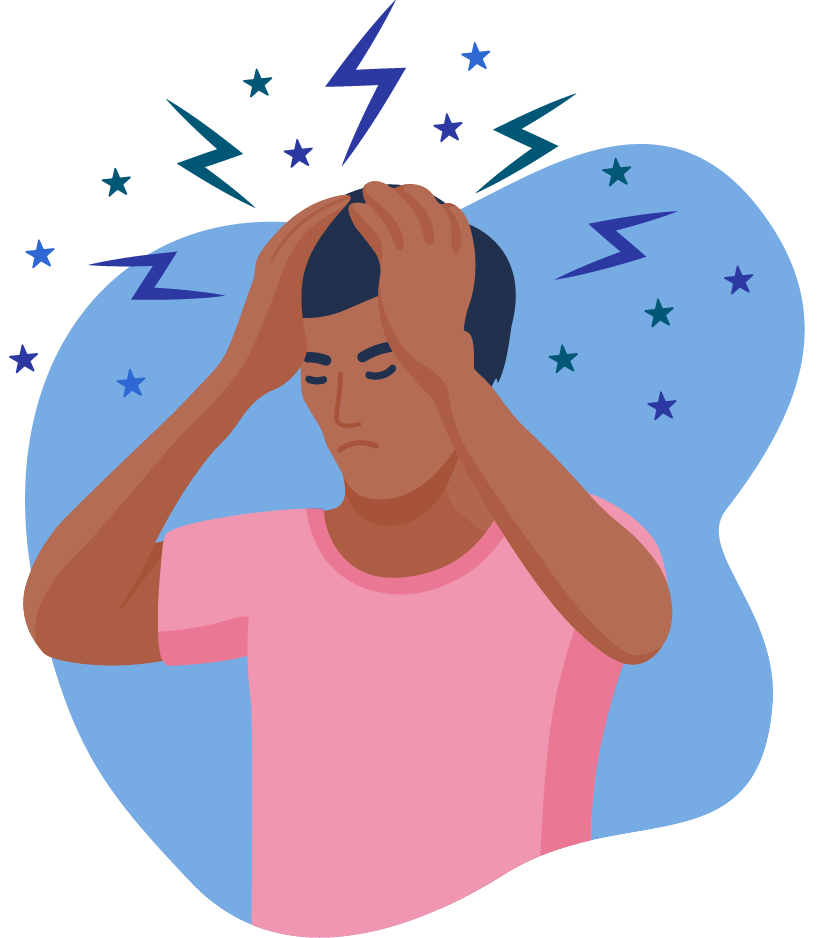
Quick Links
Resources
About MyMigraineTeam
Powered By






Migraine with brainstem aura (MBA) is an uncommon type of migraine that affects about 4 in 10,000 people. This type of migraine is much more common in children and teens. It represents 3 percent to 19 percent of migraines that start in kids.
MBA has replaced the older terms “basilar artery migraine” and “basilar-type migraine.” Doctors used to think that the migraines were due to a sudden narrowing or spasm of the basilar artery. This artery provides blood to the brainstem and many other important parts of the brain. Later, researchers discovered that MBAs were instead a migraine with a rarer form of aura called a brainstem aura.
Here, we explore what this migraine is, some of its signs and causes, and available treatments.
About 20 percent of people living with migraine headaches experience auras right before their migraines begin. Typical auras usually include:
Auras usually last no more than 60 minutes. Auras are due to temporary waves of brain activity in certain parts of the brain that are in charge of processing vision, smell, sounds, or touch. Brainstem auras, as in MBAs, happen when this brief brainwave disturbance happens in the brainstem or both sides of the brain at once. Your brainstem is the lifeline of your brain — it’s the connection between your brain and the rest of your body.
The brainstem contributes to a range of crucial functions, from breathing and consciousness to swallowing, balance, coordination, and movement. In addition to typical symptoms of migraine, people with brainstem auras may also experience symptoms such as:
Like typical auras, these aura symptoms are brief and temporary. Some of these sensations resemble symptoms of stroke or seizures. They may require further evaluation by a doctor to rule out these dangerous conditions.
Genes play a large role in MBA, and specific gene mutations have been identified. One of these mutations is called an ATP1A2 mutation. You only need one parent with the mutation to inherit it yourself.
Environmental factors also can worsen MBA. Anxiety and hyperventilation (breathing very quickly) can worsen aura. Common triggers for MBA are similar to those for other migraine types. They include:
According to diagnostic criteria and guidelines from the International Headache Society, you must have certain features for a doctor to diagnose MBA. These criteria include:
Because many brainstem aura symptoms are also symptoms of conditions like stroke and epilepsy, other tests are usually needed to rule out other potential causes. These tests may include MRI and CT scans of the brain or electroencephalograms (EEGs) to measure brain activity. Finding a correct diagnosis may involve seeing multiple doctors, including specialists, primary care doctors, and therapists.
Treatment for MBA is similar to migraine treatment in general. There are two types of medications used to treat migraines: medications you take during a migraine attack, and preventive medications you take regularly to prevent or decrease future migraines.
The main treatment for migraine attacks involves nonsteroidal anti-inflammatory drugs such as ibuprofen (Advil) and naproxen (Aleve), which you can get over the counter.
Typical prescription drugs used to treat migraines include triptans such as sumatriptan (Imitrex). However, triptans are not recommended for people with MBA. One of the side effects of triptans is the constriction (narrowing) of blood vessels. Because MBA was once thought to involve spasms of the basilar artery, the safety of triptans has not been studied well enough in people with MBA.
Preventive medications include drugs such as topiramate (Topamax) and verapamil (Calan), a calcium channel blocker.
Simple lifestyle changes can help as well. For instance, try keeping a headache diary of when you get migraines and what might trigger them. Then, you can try avoiding those potential triggers to see if your migraines improve.
Read more about treatments for migraine.
It was once thought that people living with MBA have a greater risk of strokes because MBAs were thought to be caused by blood vessel disease. However, recent studies have disproved this idea. People who experience MBA have no greater risk for stroke than people who experience migraines with typical auras. While the symptoms of these migraines might be frightening, the good news is that having migraine with brainstem aura doesn’t seem to be harmful in the long run.
MyMigraineTeam is the social network for people with migraines and their loved ones. On MyMigraineTeam, more than 75,000 members come together to ask questions, give advice, and share their stories with others who understand life with migraines.
Are you living with basilar artery or brainstem migraines? Share your experience in the comments below, or start a conversation by posting on MyMigraineTeam.

Are your headaches a symptom of migraine? Get a quick assessment.
Sign up for free!
Become a member to get even more




A MyMigraineTeam Member
In response to cindy H-S 's post
I think you have a valid link here between migraine and infection
Having recently had pneumonia again and migraine so bad. I had 2 visual disturbance episodes in… read more